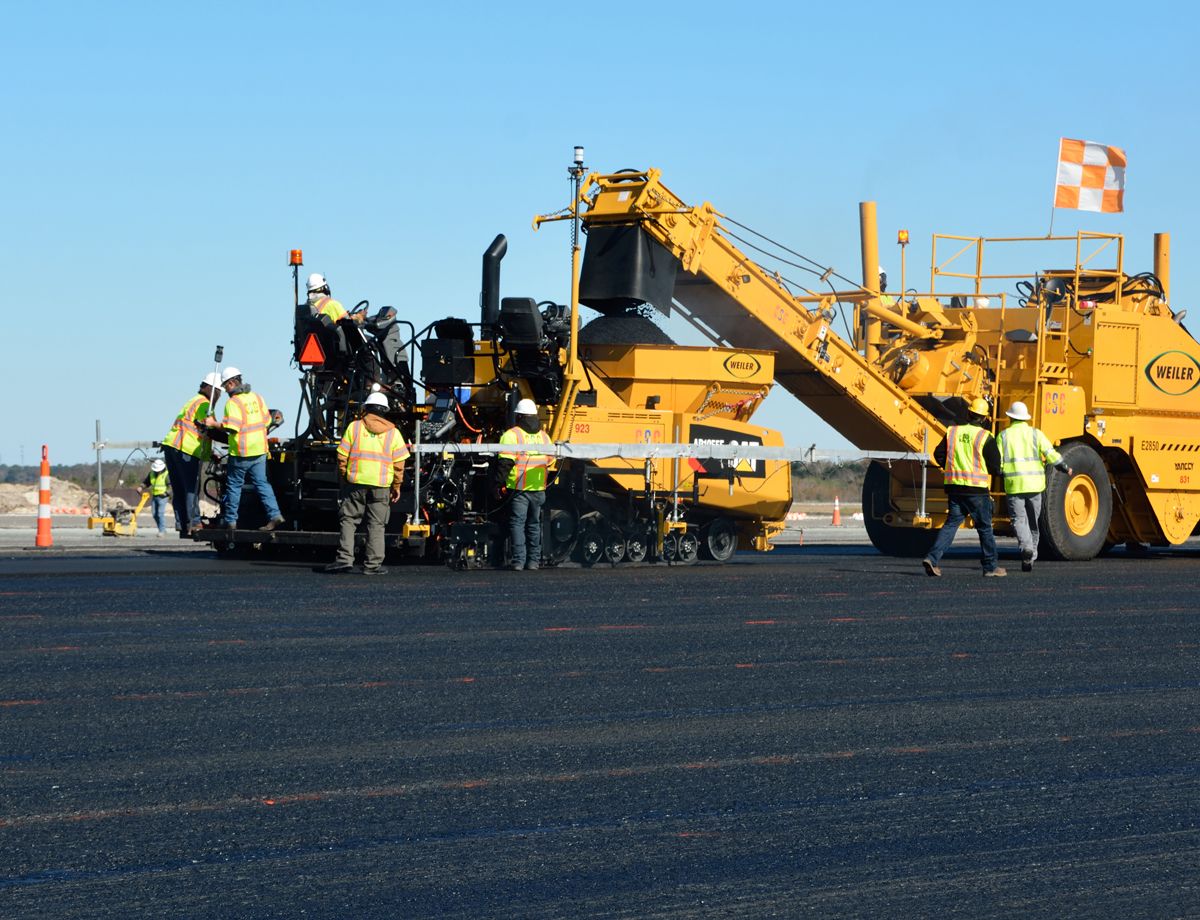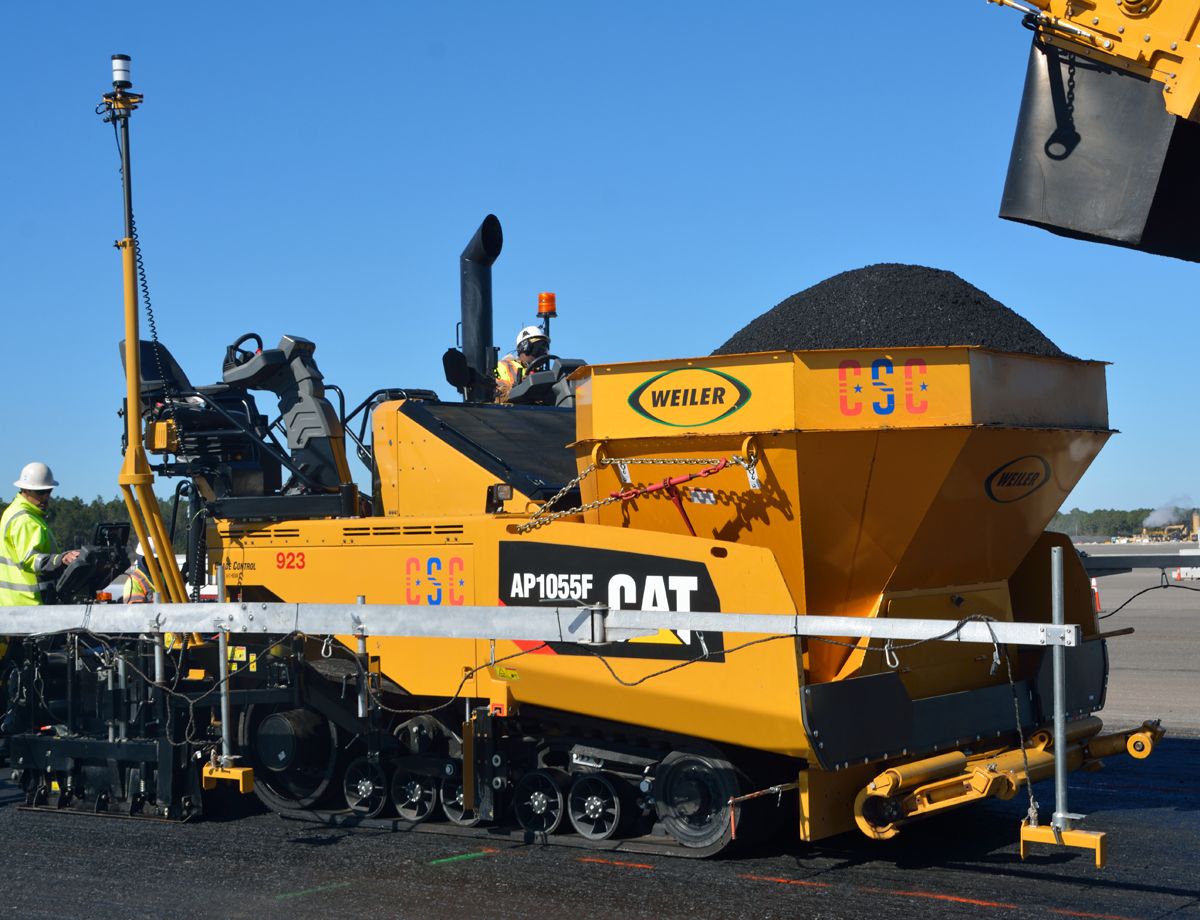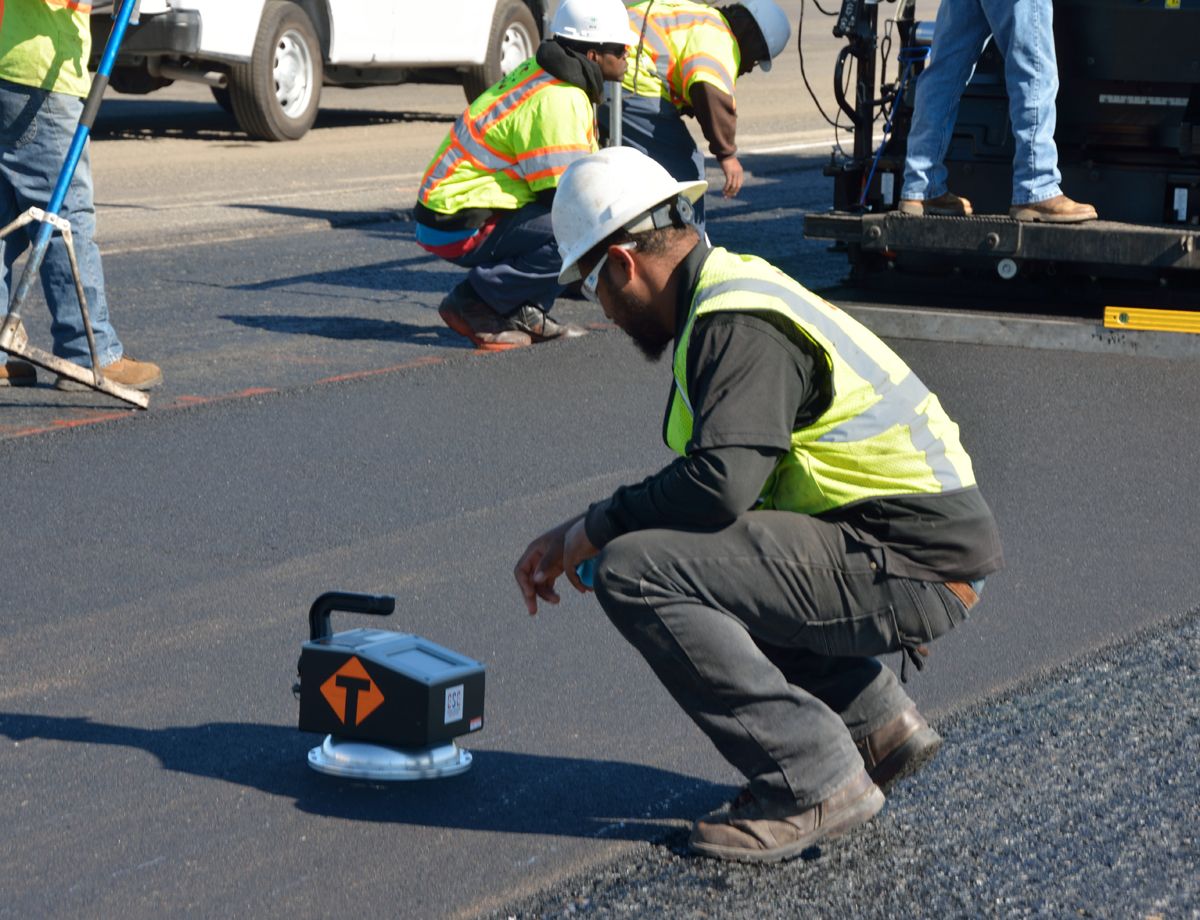Asphalt specifications for airport runways are tight. How tight? At the $52 million runway renovation of the Naval Air Station in Jacksonville, Florida, runway joints must be at least 91.5 percent density and mat density 93 percent or better. Making the job even tougher, unsuitables have required undercutting and additional full-depth repair.
Archer Western is the prime contractor for the repair and rehabilitation of the 10/28 runway at the 75-year-old Naval Air Station. Central Southern Construction is the paving subcontractor. Paving includes a mill and overlay of the entire runway and full-depth repair in failed areas. The runway was last resurfaced in 1986.
“When we’ve done the milling, we’ve found areas with variable thickness of asphalt and base material,” said Dominic Bucci, project manager for Central Southern Construction. “That caused us to go back in, and do some undercutting.”
If the contractor doesn’t meet the density specs there are pay reductions on the federal project, and liquidated damages of $29,750 per day if the tight schedule isn’t kept. When Bucci was interviewed in mid-January 2016, all lots had passed with 100 percent pay factor. “We’re up to the challenge,” Bucci said. “That’s the result of us knowing what we’re doing, and the outstanding Cat® equipment that we have.”
Cat asphalt paving equipment includes an AP1055F Paver and an SE60 V Screed. “The equipment has been performing exceptionally,” Bucci said. “At the back of the screed, we’ve been getting 89 to 90 percent density. That really helps us meet the density requirements.”
Into The Muck
The end of the runway was built over a swamp, which has complicated paving. “Doing the full-depth reconstruction, we’ve encountered tree roots, debris, organic material. We’ve had to well point some areas, undercut them by several feet. We’ve installed filter fabric and number 57 stone to build them up, so the Navy has a suitable surface,” Bucci said.
The base contract calls for the placement of 60,000 tons of asphalt. Because it is an airstrip, P401 Superpave mix is being used on all lifts. The 12.5 mm (0.5 in) polymer-modified surface course utilizes a PG76-22 binder grade. Surface and base course for the blast pavement shoulders and full-depth reconstruction is 12.5 mm (0.5 in) with a PG64-22 binder. Shoulders are 9.5 mm (0.37 in), PG64-22 binder.
The surface course is virgin asphalt, as required in the specifications. The contractor is allowed to use up to 25 percent RAP for blast pavement and base courses. “We’re recycling that from the milling that is taking place on the runway,” Bucci said.
Crews are paving 17-foot wide lanes for the taxiways and the runway. Because of tight specs, the paving placement is 150 to 200 tons per hour. “We’re making sure the asphalt is placed correctly, and we meet the specs,” Bucci said. “That’s our top priority.”
To help create a smooth mat, a Weiler E2850 Material Transfer Vehicle feeds hot mix into the paver.
Naval inspectors and an independent, third party inspector help manage quality control. “They actually take densities right on the joints. They’re taking a core directly over the joint, so they’re getting both sides of the mat,” Bucci said.
Made For The Job
The AP1055F Paver was custom-configured for the project. “We really wanted to tailor the paver for this project and other airfield projects,” said David Bucci, operations manager and Dominic’s brother. “Pave to profile projects such as this, you’re not going to use any other kind of machine. There’s no other way that you can build the project.”
Paver options include a hopper insert and a truck hitch. The machine is equipped with a Trimble SCS900 3D system, as well as Cat Grade Control.
Specs require the use of the Cat SE60 V Screed’s vibratory system. “It’s maxed out at 3,000 rpm, and we’re running it at 2,860. We don’t have it turned up all the way, but it’s real close,” David Bucci said.
The AP1055F’s Tier 4 Final emissions engine features Eco-mode, which reduces fuel consumption by an estimated 30 percent.
This is the company’s first use of the AP1055F. Caterpillar and Cat dealers, Yancey Bros. Co. and Ring Power, provided training to help the crew learn to properly use the paver, along with technical support to help keep machine uptime high.
“Support is critical in a project like this. With the liquidated damages we face, downtime is something we can’t afford,” Dominic Bucci said. “We haven’t had any downtime yet. The only thing we’ve taken our Cat equipment down for is preventive maintenance.”
Work began in June of 2015 and was completed in September of 2016, including dismantling of Central Southern Construction’s portable asphalt plant and Archer Western’s concrete batch plant.
A portable asphalt plant onsite is essential to the success of the job. “For a job of this size, there’s no way to meet the specifications with temperature, density, and quality without having the portable asphalt plant on site,” Dominic Bucci said.
High winds—speeds of 20 to 30 mph are common—quickly cool hot mix.
In the approximately half-mile trip from the plant to the paver, even tarped hot mix cools approximately 30 degrees. “Mix temperature is critical to compaction,” Dominic Bucci said.
Asphalt is 310° F (154° C) when it comes out of the back of the paver. Cat CT660 trucks transport hot mix from the portable plant to the paver.
For compaction, Central Southern Construction runs a 12-ton, high frequency breakdown roller running at 4,000 vpm behind the paver. A rubber-tired roller works behind the breakdown roller. A 12-ton static roller finishes compaction.
Lease-Purchase Makes Machine Acquisition Simple
Fleet acquisition is always a challenge. There are advantages to many methods, with each fitting a particular situation.
Central Southern Construction has had success utilizing Cat® Financial to acquire machines. “Some of our equipment has been acquired through the lease-purchase program,” said Kelly Munoz, president. “That gives us a great advantage. We start with a rental, and over the length of the project, we decide if we want to purchase the equipment.”
Cat dealer sales representatives have been helpful in selecting the type and size of machines to meet the contractor’s specific requirements. “We tell them our needs, and they reply with different equipment options. They have great product availability and support,” Munoz said.
The work is demanding and requires great attention to detail to meet the density specifications. With the proper equipment, and a talented and dedicated crew, Central Southern Construction is meeting the challenge.
RELATED STORIES:



